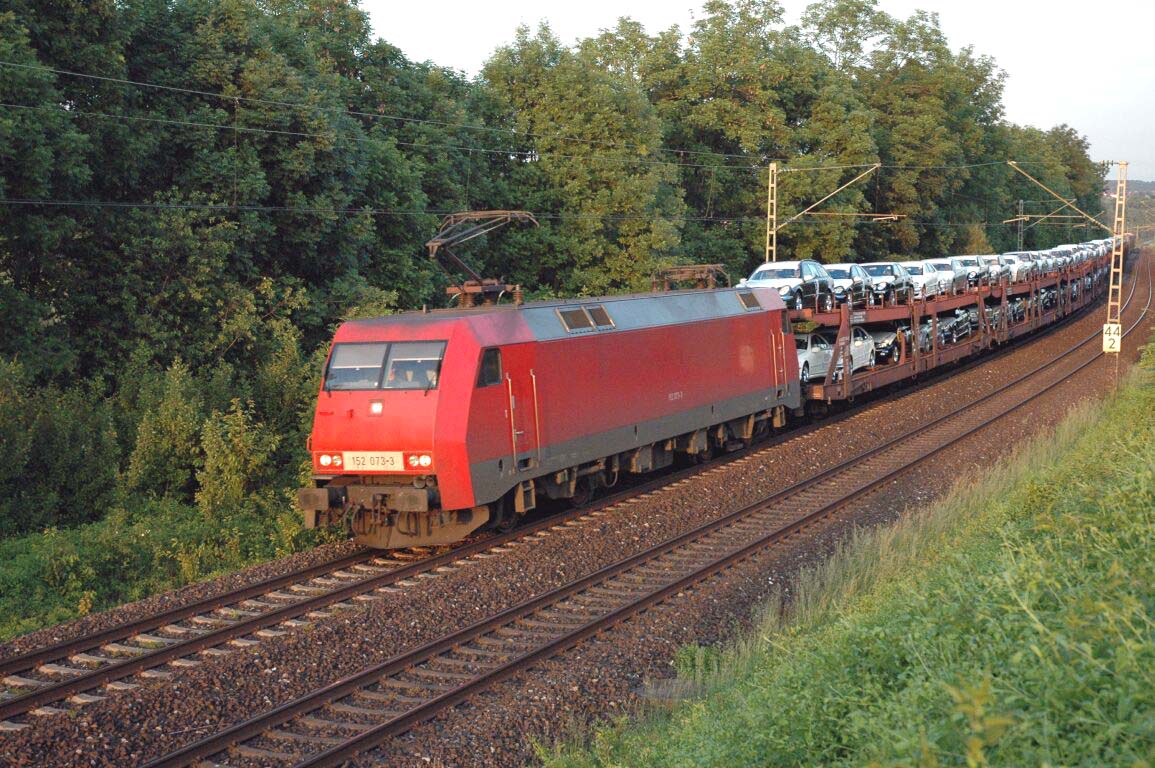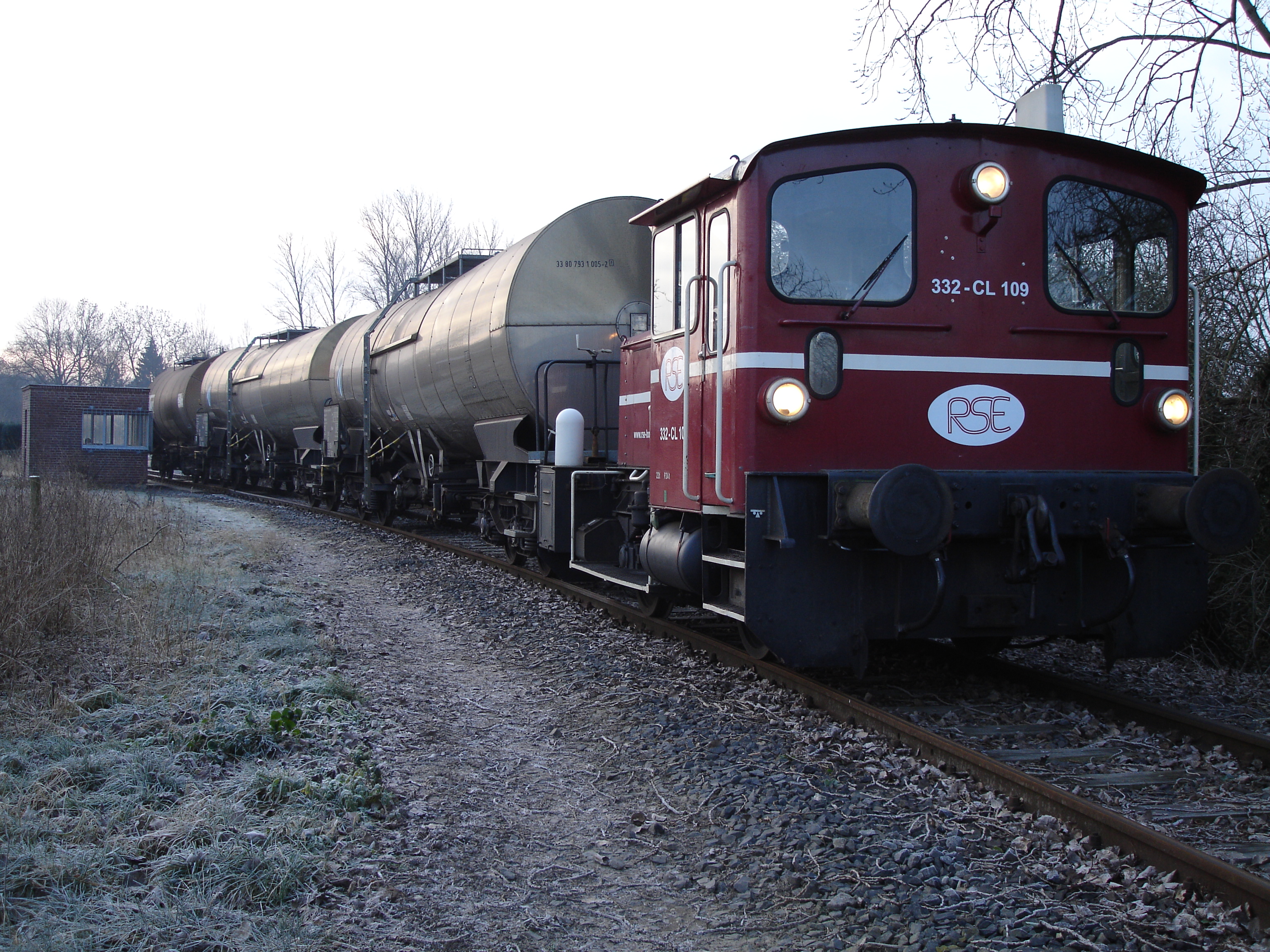|
Eggmühl–Langquaid Railway
The Eggmühl–Langquaid railway also known as the Schierling–Langquaid branch line (''Lokalbahn Schierling–Langquaid'') or Laaber Valley Railway (''Laabertalbahn''), is a standard gauge branch line in the state of Bavaria in southern Germany. It runs from Eggmühl to Langquaid and is operated by the Rhein-Sieg-Eisenbahn (RSE). History The line was opened in 1903. Goods traffic was hauled by steam traction until 1964 and thereafter with diesel locomotives. In 1968 passenger services were withdrawn. In 1996 it was announced that goods traffic was also going to be closed down. However, in cooperation with a local initiative and local politicians, the Rhein-Sieg-Eisenbahn took over the Eichbühl–Lanquaid section from DB Netz on 1 January 2000. Five years later the section from Eggmühl to Eichbühl was added. Since 2001, goods trains have been hauled by a Class O & K MV 9, MV 9 locomotive built by Orenstein & Koppel, which had been purchased from the Zeil am Main sugar factory ... [...More Info...] [...Related Items...] OR: [Wikipedia] [Google] [Baidu] |
DB Netz
DB Netz AG is a major subsidiary of Deutsche Bahn that owns and operates a majority of the German railway system (2019: 33,291 km). It is one of the largest railway infrastructure manager by length and transport volume of its network. The company was established in the course of the second stage of the German rail reform as a subsidiary of Deutsche Bahn AG. DB Netz is headquartered in Frankfurt and it has seven regional divisions ("Regionalbereiche", RB) and a central division. The locations of its regional headquarters are Berlin (RB east), Frankfurt (RB central), Duisburg (RB west), Hanover (RB north), Karlsruhe (RB southwest), Leipzig (RB southeast) and Munich (RB south). DB Netz AG is profitable from route fees but receives extensive public funding for maintaining, developing and extending the network of European and federal transportation routes. It was included in the brand DB Netze when Deutsche Bahn was reorganised into three major divisions covering passengers, l ... [...More Info...] [...Related Items...] OR: [Wikipedia] [Google] [Baidu] |
Royal Bavarian State Railways
The Royal Bavarian State Railways (''Königliche Bayerische Staats-Eisenbahnen'' or ''K.Bay.Sts.B.'') was the state railway company for the Kingdom of Bavaria. It was founded in 1844. The organisation grew into the second largest of the German state railways (after that of the Prussian state railways) with a railway network of 8,526 kilometres (including the Palatinate Railway or ''Pfalzbahn'') by the end of the First World War. Following the abdication of the Bavarian monarchy at the end of the First World War, the 'Royal' title was dropped and on 24 April 1920 the Bavarian State Railway (''Bayerische Staatseisenbahn''), as it was now called, was merged into the newly formed German Reich Railways Authority or Deutsche Reichseisenbahnen as the Bavarian Group Administration (''Gruppenverwaltung Bayern''). The management of the Bavarian railway network was divided into four Reichsbahn divisions: Augsburg, Munich, Nuremberg and Regensburg. The former Palatinate Railway formed the ... [...More Info...] [...Related Items...] OR: [Wikipedia] [Google] [Baidu] |
Deutsche Bahn
The (; abbreviated as DB or DB AG) is the national railway company of Germany. Headquartered in the Bahntower in Berlin, it is a joint-stock company ( AG). The Federal Republic of Germany is its single shareholder. describes itself as the second-largest transport company in the world, after the German postal and logistics company / DHL, and is the largest railway operator and infrastructure owner in Europe. Deutsche Bahn was the largest railway company in the world by revenue in 2015; in 2019, DB Passenger transport companies carried around 4.8 billion passengers, and DB logistics companies transported approximately 232 million tons of goods in rail freight transport. The group is divided into several companies, including ''DB Fernverkehr'' (long-distance passenger), '' DB Regio'' (local passenger services) and ''DB Cargo'' (rail freight). The Group subsidiary ''DB Netz'' also operates large parts of the German railway infrastructure, making it the largest rail network in ... [...More Info...] [...Related Items...] OR: [Wikipedia] [Google] [Baidu] |
Unit Train
A unit train, also called a block train or a trainload service, is a train in which all cars (wagons) carry the same commodity and are shipped from the same origin to the same destination, without being split up or stored en route. They are distinct from wagonload trains, which comprise differing numbers of cars for various customers. Unit trains enable railways to compete more effectively with road and internal waterway transport systems. Time and money is saved by avoiding the complexities and delays that would otherwise be involved with assembling and disassembling trains at rail yards near the origin and destination. Unit trains are particularly efficient and economical for high-volume commodities. Since they often carry only one commodity, cars are of all the same type; often the cars are identical. Use Unit trains are typically used for the transportation of bulk goods. These can be solid substances such as: * Track ballast or gravel * Iron ore from mines to ports or ste ... [...More Info...] [...Related Items...] OR: [Wikipedia] [Google] [Baidu] |
Railion Deutschland
DB Cargo (previously known as Railion and DB Schenker Rail) is an international transport and logistics company. It is responsible for all of the rail freight transport activities of the German railway company Deutsche Bahn (the DB Group) both inside Germany and on a global level. DB Cargo has a registered office in Mainz and a further administrative office in Frankfurt am Main. The company was founded as ''DB Cargo AG'' on 1 January 1999 under the second stage of liberalisation reform of the German railway system (Bahnreform) underway around this time. Initial operations were primarily focused on the rail freight market within Germany; however, during early 2000, the company was reorganised under the ''Railion'' holding company as part of a merger between DB Cargo and the Dutch state-owned rail company Nederlanse Spoorwegen's rail freight operations. This new structure was designed for the cooperation, and incorporation, of future partnerships with other rail freight co ... [...More Info...] [...Related Items...] OR: [Wikipedia] [Google] [Baidu] |
Zeil Am Main
Zeil am Main is a town in the Haßberge district in Lower Franconia, an area in the federal state of Bavaria, Germany. It is situated on the right bank of the Main, 7 km east of Haßfurt, 24 km northwest of Bamberg, and 25 km east of Schweinfurt. Zeil is a historic Franconian town known for its old churches, romantic houses, medieval walls and towers, the hill church of "Zeiler Käpelle", and the castle ruins of the Schmachtenburg. History Zeil am Main is located in an area of the River Main valley where, since the 11th century, the dioceses of Würzburg and Bamberg overlapped and vied for domain of the region. Zeil's strategic location between the dioceses, situated on the River Main trade route and military road between Nuremberg and Schweinfurt, ensured that Zeil was worthy of possession by regional powers. The earliest evidence of Zeil am Main as a city is in a 1018 AD deed of donation signed by Henry II, King of the Romans. Bishop Lamprecht of Prun grante ... [...More Info...] [...Related Items...] OR: [Wikipedia] [Google] [Baidu] |
Orenstein & Koppel
Orenstein & Koppel (normally abbreviated to "O&K") was a major Germany, German engineering company specialising in railway vehicles, escalators, and heavy equipment. It was founded on April 1, 1876 in Berlin by Benno Orenstein and Arthur Koppel. Originally a general engineering company, O&K soon started to specialise in the manufacture of railway vehicles. The company also manufactured heavy equipment and escalators. O&K pulled out of the railway business in 1981. Its escalator-manufacturing division was spun off to the company's majority shareholder at the time, Krupp, Friedrich Krupp AG Hoesch-Krupp, in 1996, leaving the company to focus primarily on construction machines. The construction-equipment business was sold to New Holland Construction, at the time part of the Fiat Group, in 1999. Founding and railway work The Orenstein & Koppel Company was a mechanical engineering, mechanical-engineering firm that first entered the railway-construction field, building locomotives a ... [...More Info...] [...Related Items...] OR: [Wikipedia] [Google] [Baidu] |
O & K MV 9
O, or o, is the fifteenth letter and the fourth vowel letter in the Latin alphabet, used in the modern English alphabet, the alphabets of other western European languages and others worldwide. Its name in English is ''o'' (pronounced ), plural ''oes''. History Its graphic form has remained fairly constant from Phoenician times until today. The name of the Phoenician letter was '' ʿeyn'', meaning "eye", and indeed its shape originates simply as a drawing of a human eye (possibly inspired by the corresponding Egyptian hieroglyph, cf. Proto-Sinaitic script). Its original sound value was that of a consonant, probably , the sound represented by the cognate Arabic letter ع ''ʿayn''. The use of this Phoenician letter for a vowel sound is due to the early Greek alphabets, which adopted the letter as O "omicron" to represent the vowel . The letter was adopted with this value in the Old Italic alphabets, including the early Latin alphabet. In Greek, a variation of th ... [...More Info...] [...Related Items...] OR: [Wikipedia] [Google] [Baidu] |
Rhein-Sieg-Eisenbahn
The Rhein-Sieg-Eisenbahn or RSE is a German company founded by the ''Verkehrsclub Deutschland'' (Transport Club of Germany) and interested private individuals with the primary purpose of saving a threatened industrial line, the Beuel–Großenbusch railway. A joint venture ''RSE Cargo'' was formed with logistics company Hoyer GmbH, Hoyer with RSE providing a railway company licence. In 2000 Hoyer acquired a majority share in ''RSE Cargo'' and renamed it ''Hoyer Railserv''. History Today the RSE operates Germany-wide, not least as the railway infrastructure company for just under of railway lines in three different in federal states (as at: October 2008): * Endorf–Obing railway, Bad Endorf–Obing, Bavaria * Bonn-Beuel - Hangelar (in the town of Sankt Augustin), North Rhine-Westphalia (NRW) * Eggmühl–Langquaid railway, Eggmühl–Langquaid, Bavaria * Höddelbusch - Schleiden (Olef Valley Railway), NRW * Osberghausen (in the town of Engelskirchen) - Oberwiehl (Wiehl Valley ... [...More Info...] [...Related Items...] OR: [Wikipedia] [Google] [Baidu] |
Eggmühl
Eggmühl (formerly known in English as ''Eggmuhl'' or ''Eckmühl'') is a village of Germany, in Bavaria, on the Große Laaber, 20 km S.E. of Regensburg. Since 1978, it is part of the municipality Schierling. It is famous as the site of a fought on the 22 April 1809 during the |
Germany
Germany,, officially the Federal Republic of Germany, is a country in Central Europe. It is the second most populous country in Europe after Russia, and the most populous member state of the European Union. Germany is situated between the Baltic and North seas to the north, and the Alps to the south; it covers an area of , with a population of almost 84 million within its 16 constituent states. Germany borders Denmark to the north, Poland and the Czech Republic to the east, Austria and Switzerland to the south, and France, Luxembourg, Belgium, and the Netherlands to the west. The nation's capital and most populous city is Berlin and its financial centre is Frankfurt; the largest urban area is the Ruhr. Various Germanic tribes have inhabited the northern parts of modern Germany since classical antiquity. A region named Germania was documented before AD 100. In 962, the Kingdom of Germany formed the bulk of the Holy Roman Empire. During the 16th ce ... [...More Info...] [...Related Items...] OR: [Wikipedia] [Google] [Baidu] |




